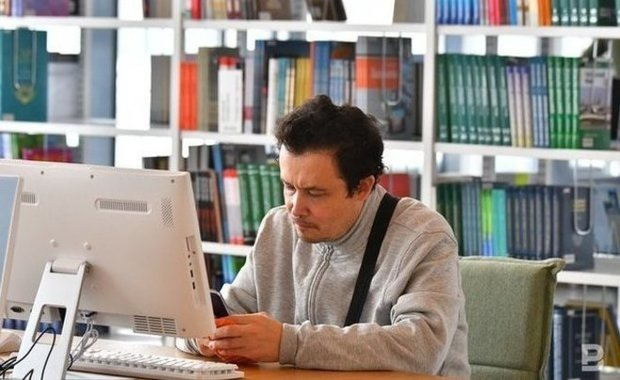Leonid Delitsyn: ‘The substitution of foreign software: a grim fate or brief fling?’
An analyst of Finam FG about the transition to Russian software and the market’s growth prospects to 1 trillion rubles

The Russian government intends to consider all key types of information systems as critical information infrastructure objects (CII) to accelerate the transition to Russian software in the country. Prime Minister Mikhail Mishustin shared planes at a strategic session on software import substitution. In an op-ed column for Realnoe Vremya, analyst of Finam Leonid Delitsyn writes about how the substitution of foreign software with Russian one is doing now.
“The state wants to kill all bird with one stone”
The substitution of foreign software with Russian is a monumental historic experiment that doesn’t have analogues in history. It is going according to the plans, as it should be these days, but there are some flaws, so to speak. At a strategic session on import substitution in September, Prime Minister Mikhail Mishustin said that 80% of foreign programmes already have Russian analogues. Since 400 types of critically important corporate software were detected, one can conclude that there are about 300 Russian software products for enterprises. As the premier said, in general these products are ready, they just need to be completed fully. Not to fragment efforts and reinvent the wheel, 33 competence centres uniting the efforts of over 300 industrial enterprises were created. The pool of applications submitted by clients is 200. There is the first result: enterprises formulated what they need.

Generally speaking, we can’t say these tasks are in harmony. The enterprises in general don’t care whose software it is if it is the same they used (от SAP, Oracle и Microsoft). There is a famous method of TAM (Technology Acceptance Model) to introduce IT in enterprises. There are two main problems with such introduction: new software is complex and unnecessary. Employees are fine with the old one they already learnt how to use it, they don’t want to invest time in learning new one. In particular, if this new software does what the old one did, its introduction doesn’t provide any new career prospects. Hence, the perfect option for enterprises is to have the same interfaces and API and when users and corporate designers don’t have to change anything. But corporations think that, of course, Russian developers should invest in such a combination. There is no great sense in this for them if they overlook the size of the pie they got.
For instance, costs on software in the USA exceed 20% of total costs on information and telecom technologies, while here they amount to 5%. The whole market of information and telecom technologies, by Gartner’s estimate, is $4,2 trillion and grows 8% a year. So Russian enterprises’ expenses on software can grow from 240 billion rubles, according to my calculations, almost fourfold — to 900 billion rubles a year. As a leading harvester driver claimed in one Soviet film, “For the sake of such bread...” (one can use stewed tea to withstand the fight for the harvest). In other words, the client can be met halfway, this is what Russian developers in general do.

“Microsoft shrouded office workers with its software”
On the other hand, the probability that political storms will calm down and the window of opportunities for Russian developers will close again is far from being zero. Some companies (and individuals — everybody can check what OS they use) solve to sit it out. In this situation, it is important for developers to get those clients who are ready to risk to use Russian software. This is why similar methods and step-by-step guides on how to replace foreign software with Russian and so on can be found on many Russian developers’ websites today.
As for progression industries will switch to Russian software with, I think it will be the same as in the past during computerisation. The financial sector, telecoms and public services will switch first, then it is retailing, resource-based industries, energy, transport and finally agriculture. Perhaps, education will be among those falling behind. Now many write about the reasons impeding the transition of the education system to Russian software, but I will cite my own experience.
Earlier this century, my boss who was a PR director of a big online company and at the same time occupied the chair of a department head at university despatched me to teach several subjects. The manners were different then, and I showed up in the dean’s office pleased with myself. Now I would unlikely dare to cross the threshold. Firstly, I had to submit an application in MS Word. I didn’t know how to use Word, and since I didn’t need it I didn’t hide it. The university, in turn, was surprised: “How do you work in an online company then?” Perhaps, the dean’s office thought that websites are created in Word.
Two decades have passed since then, and of course I mastered Word. But the administrators who asked me this question unlikely needed something besides new versions of Microsoft products. The corporation shrouded office workers with its software like babies. Computerisation and informatisation have been at universities during all these years, which intensified the penetration of Microsoft products to the education system — in different disciplines, like exercises, lab works, practical tasks. It goes without saying that when I worked in this system, I prepared patterns in MS Excel for my students, not in something different. It is a convenient instrument, and there are textbooks. It is good there is an alternative like freely distributed, but students have Windows and Excel in their personal computers. Only a missionary excited with some special idea could impose Libre Office on them in this situation.
Russian software market can increase from 250 billion to 1 trillion rubles
This is why from my personal experience I would assume that the education system will be “glued” to the installed MS software for the as long as possible period until it is banned. There is always a possibility of shifting responsibility to lower layers of hierarchy not to burden the budget, and when there are complaints from the top, the staff will be rejuvenated with a sauce of violations.
Recent news illustrates the difficulties of the process. Last week, Russian Software Association of Software Developers asked the Ministry of Digital Development, Communications and Mass Media and Ministry of Education to provide the compatibility of My School Federal State Information System with Russian software.
Developers fear that this Federal State Information System will run only with Microsoft apps. And their fears and hopes are clear. Developers urgently need staff that can develop, introduce Russian software and use it. But informatics at school and university is not about IT education — it is studying Word, Excel, Power Point and Access databse and so on. To start teaching something different, it is first necessary to write textbooks, tests and make up exercises. This takes time. Probably at a year. And then these textbooks and tests need to be approved. It means it will take two years. But students need to be taught now, which means the Federal State Information System won’t be able to teach anything but Microsoft products in the next few years.
The Ministry of Education perplexedly gave developers the brush-off: like nobody forbids offering Russian developments to directly schools, while the Federal State Information System is not a marketplace. And the ministry can be understood too because import substitution isn’t its basic task.

But no more sad things. Some can shake Microsoft’s monopoly. There have been at least four big developers of Russian Linux — Astra Linux, Alt Linux, ROSA Linux and RED OS. Sellers sell computers with preinstalled Russian software. Russian OS cost about 3,500 rubles. From a perspective of users, there is a problem here too, of course — it is by far much more difficult to choose between several producers (that aren’t very well-known) than buy a computer with the habitual MS Windows. And experienced users would prefer to download OS free. But the process is in motion: sales in stores kicked off, analysts assess sales, regular ratings will appear in the press later, users’ debate will break out about which system is better — all this helps the market to grow.
Considering the issue from a perspective of the stock market, in the future the potential of the Russian software market will expand from 250 billion rubles to almost a trillion. It means Russian developers will grow faster, and many will need additional investments in development. This promises new IPOs in the IT sector and promising public companies. The repetition of the success of the cybersecurity market player from Russia Positive Technologies looks quite probable. If the substitution of foreign software doesn’t turn out a short special operation but a long-term strategy, mass investors can also earn on the growth of the Russian software industry.
Reference
The author’s opinion does not necessarily coincide with the position of Realnoe Vremya’s editorial board.